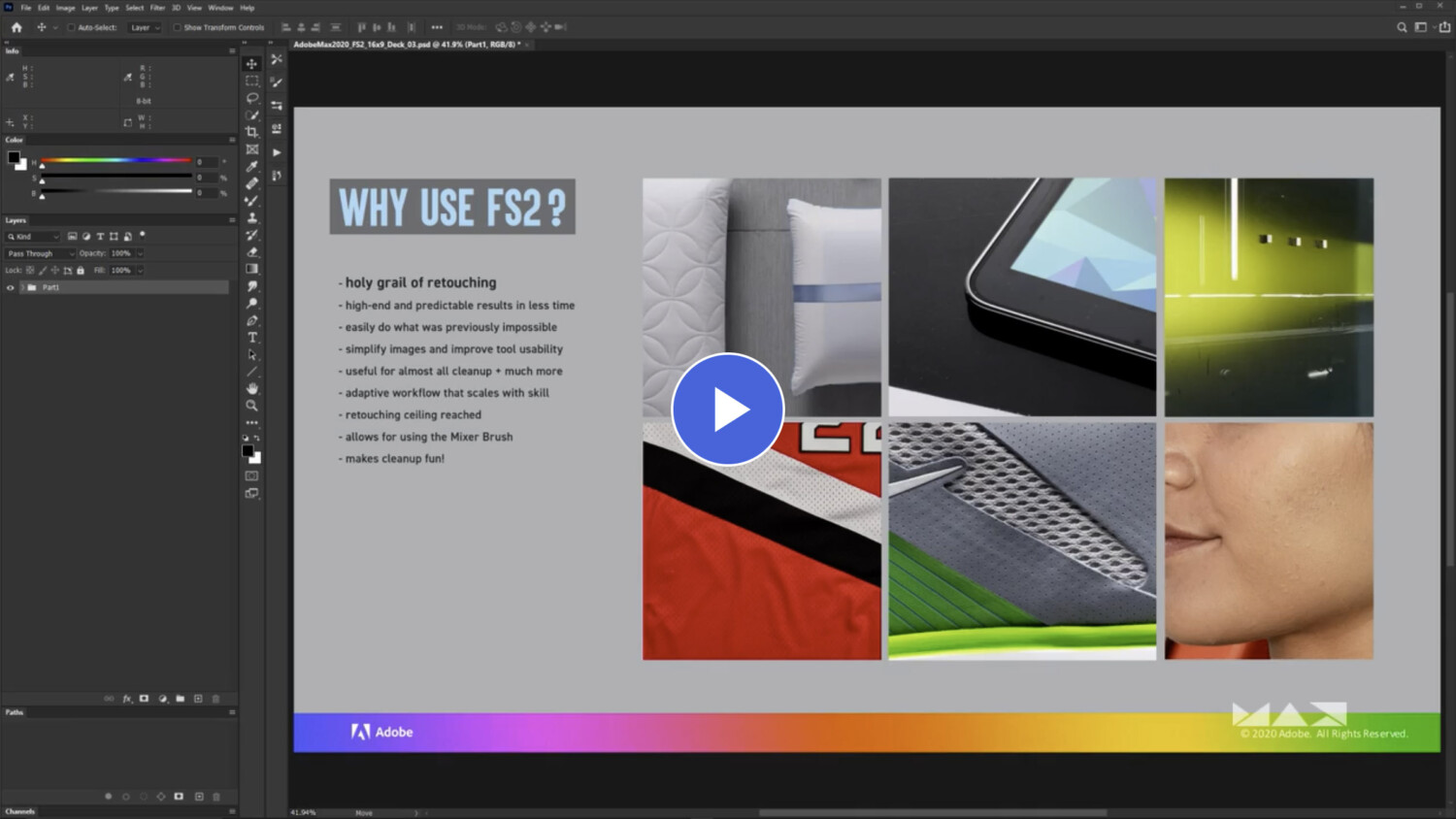Learn Earth Oliver’s Frequency Separation 2.0 Through Adobe Max
Frequency separation is an outrageously powerful tool to have in your retouching skillset. Simply put, frequency separation (FS) is a technique used in Photoshop where you separate the colors and tones in an image from the texture and grain. Once separated, you are able to edit both “layers” independently from each other.
While it was conventionally used in skin retouching, frequency separation is perfect for fixing wrinkly bedspreads, weird unwanted shadows, streaky windows, and the like.
The first time I had ever heard of frequency separation was through Phlearn. I had their frequency separation action and admittedly skipped right over the how-and-why it worked or what it was actually doing to my files. Admittedly again, I tried to use it regularly, but found myself frustrated and went back to trying to agonizingly clone stamp out whatever needed to be fixed.
A few years ago I came across the holy grail of frequency separation. Commercial retoucher Earth Oliver had a course on Frequency Separation 2.0. Earth’s updated version of frequency separation allowed for even more precise control of both the high and low frequency layers.
I originally learned Earth Oliver’s FS 2.0 through the Advanced Texture Clean Up PRO EDU tutorial (which I highly recommend). Now, you can also learn Frequency Separation 2.0 through Adobe MAX.
In his 2020 Adobe Max labs – which are free to watch by the way – Earth goes over the fundamentals of frequency separation, how it works, and what separates FS 2.0 and its median-based workflow from traditional frequency separation. He teaches you how to build the action, what tools to use, and how versatile it is. The lesson is broken down into these three video lessons on Adobe’s website. Check them out:
Frequency Separation 2.0 Part 1
Frequency Separation 2.0 Part 2
Frequency Separation 2.0 Part 3
If you’re looking to level up your retouching skills, learn frequency separation for the first time, or move on to FS 2.0 from traditional frequency separation, I can’t recommend these videos enough.
